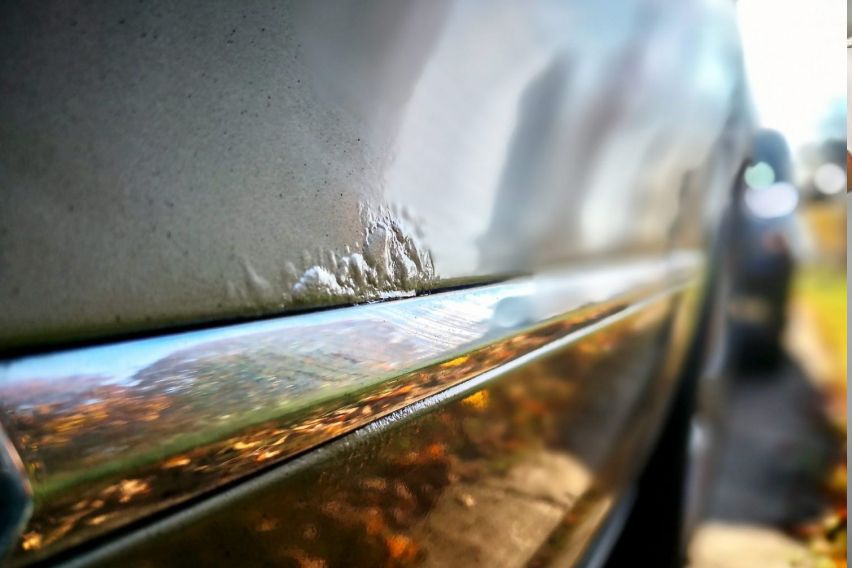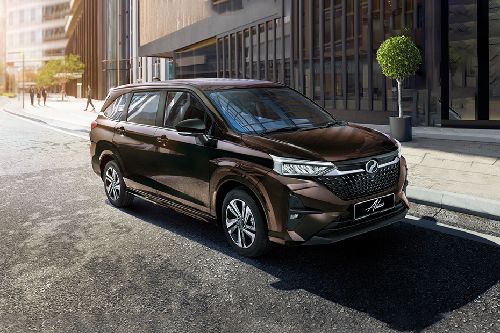Car Rust-proofing 101: All you need to know

Car rust is nothing but cancer for your beloved vehicle. And once you catch hold of it don’t let it go until it is fixed and gone forever. Oh yes, fixing it is quite expensive, so it is a good idea to take all precautionary measures to avoid rust at all costs.
KEY TAKEAWAYS
What are the benefits of waxing a car?
Applying car wax after polishing puts a protective layer on the car surface that has several benefits including protection from scratches, prevents the exposure of paint, adds to the car’s shine, and enhances the car’s resale value.How often should a car be rust-proofed?
As per car experts, a car should be rust-proofed every two years. However, it majorly depends on the condition of the car.What are the indications of rust in a car?
Here are a few signs that reflect things are going wrong rust-wise - Irregularity or unevenness in the paintwork, bubbles on the panels, and dents, abrasions, or scratches on the panels.What are some of the most common locations of rust in a car?
Rust can occur on any metallic component, however, there are some car parts where the rust is most likely to occur. The list includes - exhaust pipe, suspension, floor, frame rails, doors, and wheel rims.Cars are made up of metal bodies, something that catches rust quite easily if not taken appropriate care of. Most automobiles today come with rust-protecting coating, however, there are still a few areas exposed to the monster.
From a car’s wheel wells to the undercarriage, all pose a danger of being infected by rust. This enemy, if it makes its way to your car, will not only destroy its appearance but weaken it from within, shaking up its entire core strength.
In this article, we will discuss all there is to know about car rust, including its causes, types, preventive measures, and its removal.

What causes rusting in a car?
Oxidation of iron and steel components in the presence of moisture causes the formation of rust. In the case of cars, steel is the preferred choice of metal as it is known for its formability and tensile strength. What however makes it susceptible to rust are the impurities present in steel. Car manufacturers all around the world are working on ways to mitigate rust on the cars, but the fact is rust somehow manages to degrade the car.
Usually, cars manufactured until 1990 are mostly seen today covered with a lot of rust. Why? Well, that’s because the use of alloy and galvanized steel (zinc and iron fused during casting) wasn’t the industrial standard back then.
What is rust-proofing?
As the name suggests, rust-proofing is nothing but adding a protecting layer to the car making it rust-free. It is vital for a car as rust has a great impact on the car. For starters, it shortens the vehicle’s life, causes mechanical & electrical failure in the car, and much more.

Why is it important to rustproof your car?
Here are the top five reasons to rust-proof your car -
Low repair cost: A rust-free car has fewer maintenance issues than the ones attacked by corrosion. Electronics usually require repairs when they are attacked by rust. The market is filled with ‘active’ rust control products that keep moving parts lubricated thus resulting in fewer sizeups.
Enhanced safety: Rust compromises with the car’s structural integrity. Corroded parts can cause panels to collapse in a way not intended by the manufacturer.
Longevity: A rust-free car undoubtedly lasts longer both structurally and mechanically.
Supports car’s resale value: Rust-proofing will protect the car’s finish and keep the resale value from decreasing.
Good for the environment: A rust-free car and metal components are good to be recycled, meaning they’ll not add up to the big pile of dump

Does your car need rust-proofing?
Certain factors will help you determine whether or not your car needs rust-proofing.
The first is the time frame you wish your car to stay usable. For a longer lifespan that goes beyond the car’s warranty period, rust-proofing will come in as a handy measure
The second factor concerts to your car’s surroundings and the climatic conditions. The more humid the environment, the more is your car prone to rust
The third factor is your car’s age. Say, if your car is ten years old then the chances of it carrying galvanized steel are low, thus the need for rust-proofing. Galvanized steel displays the formation of rust, thus offering improved protection

Stages of rust formation
#1 stage: Surface rust
The first stage of rust formation is called surface rust and it usually prompts at the surfaces that either accumulate moisture or expose the metal underneath; for instance bumps, dents, and scratches. Treatment at this stage will prevent the rust from spreading further.
#2 stage: Scale rust
If the surface rust (as mentioned above) is left unattended for an extended timeframe, we’ll land on the second stage, called the scale rust. When the rust is left unattended for a long period, bubbles start to form on the car’s paint surface. It happens when the molecules of iron oxide are bigger than those of steel. The rust spreads and forms flakes of paint and iron.
#3 stage: Penetrating rust
If the scale rust is also left untreated, it will develop and penetrate further. The rust will reach body parts that are not easily accessible and corrode all the metallic portions of the vehicle. A thoroughly corroded car can’t be treated and can only be scrapped.
How can rust formation be delayed?
The anti-rust treatment available at service centers is one of the great options to delay/avoid rust formation on the car. However, there are a few measures that could be taken by the owner to distance the possibility of rust.
Car wash
Washing your car regularly ensures the removal of dirt and road grime, which reduces the rate of corrosion. One of the most susceptible areas to rust is the car's undercarriage area, so make sure to pay extra attention to this area.
Car Wax
Waxing your car body not only makes the surface shiny but also provides a protective coating that acts as a barrier against road grime and UV rays.
Fix the abrasions
If the car’s body is left exposed to the environment due to abrasions on the panels and paint, it might promote the formation of rust. Therefore, it is advisable to fix the abrasions with a repaint or touch-up pen.
Treat rust spots
It is advisable to treat the rust at the initial stage, do not give it a chance to spread further. Both surface and scale rust can be fixed easily with the help of a primer, paint, or coating.

Surface rust DIY treatment
If the surface rust is quite severe and covers a large area, it is best to get the car treated at a trusted service center. However, if there is a single or small rust pot on the body panel, then it can be fixed by the owner at home! How? By following the below-mentioned steps -
- Take a sandpaper and scratch the paint near and around the rust spot. Scratch enough leaving the surface super smooth
- Make sure the surrounding area is covered with old newspaper or old cloth
- Next, apply primer to the affected surface
- Upon drying, apply paint to the spot
- Lastly, wash the car thoroughly and apply car wax
Also Read: Most basic car care tips one should know and follow
Sell your car at the best price
 Verified and genuine buyers
Verified and genuine buyers
Trending & Fresh Updates
- Latest
- Popular
You might also be interested in
- News
Featured Cars
- Latest
- Upcoming
- Popular

















































